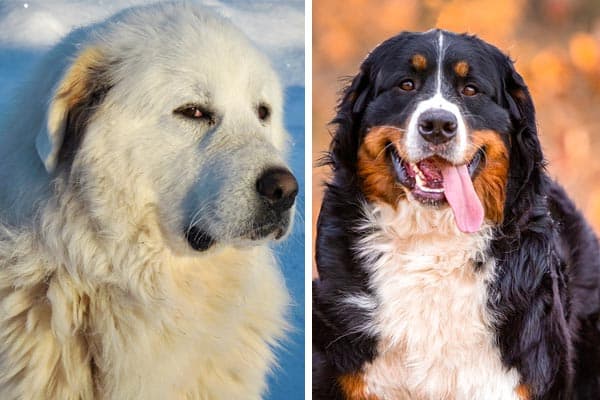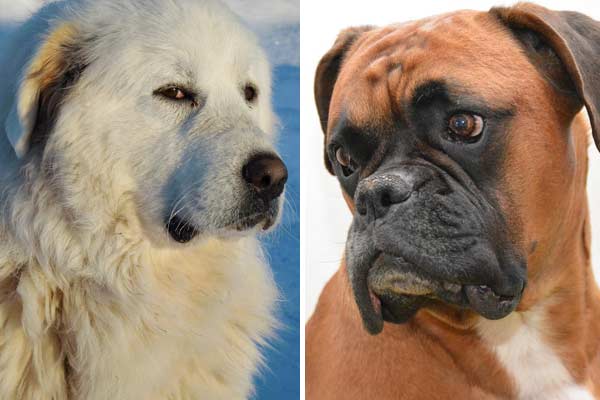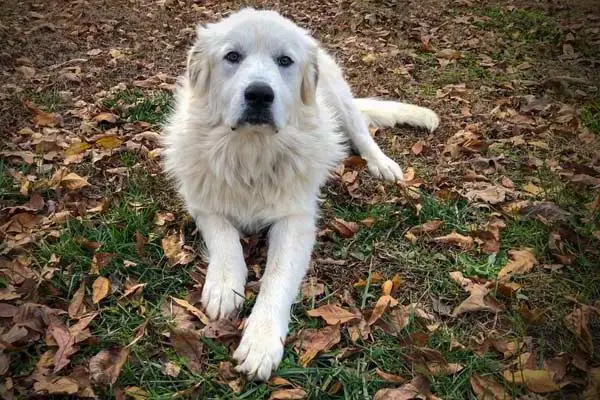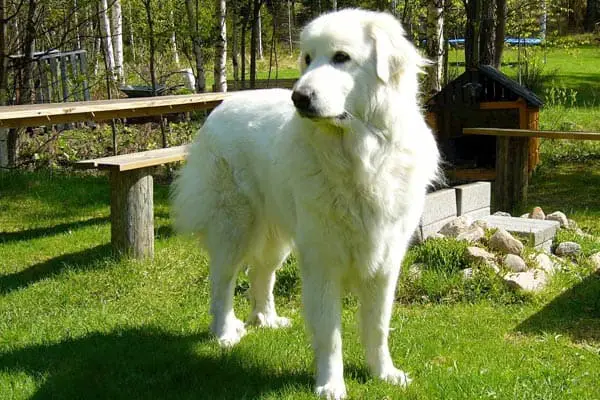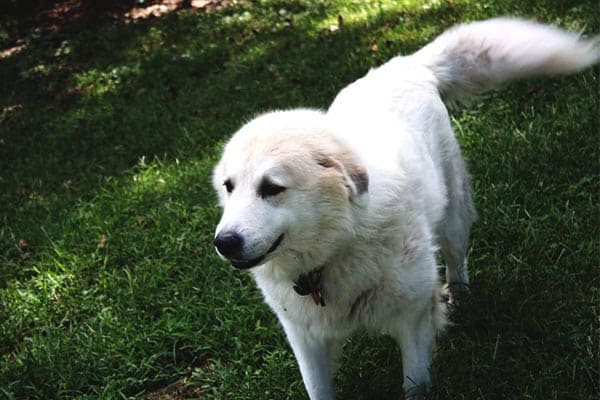Can Great Pyrenees Swim: the Surprising Truth About This Big Dog in Water
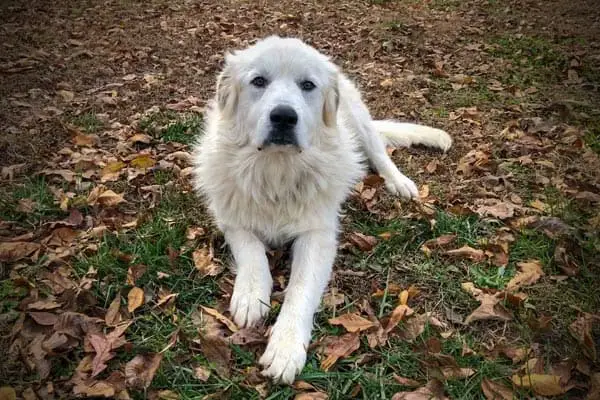
To look at an enormous Great Pyrenees dog, you might not think these dogs should ever go near the water.
With so much fur, once their thick double-layer coat gets wet, will the dog simply sink to the bottom?
But if you own the Great Pyrenees or are thinking about adding this dog breed to your family, you might be surprised at how your pup responds to water.
In this article, we will take a closer look at the Great Pyrenees and water safety.
Can Great Pyrenees Swim
As the Great Pyrenees Club of Southern Ontario points out, Great Pyrenees dogs can swim.
But as the same organization points out, a better question might be whether your Great Pyrenees wants to swim or likes to swim. Let’s find out more about this topic now!
Watch a Great Pyrenees Dog Swimming
This short and fun YouTube video clearly demonstrates that the big shaggy Great Pyrenees Dog is a surprisingly good swimmer!
Is It Safe for a Great Pyrenees Dog to Swim
As we mentioned in the introduction here, the Great Pyrenees is a huge dog breed. And their thick double-layer coat makes them even bigger and heavier.
The American Kennel Club (AKC) states that the largest male Great Pyrenees adult dogs can easily weigh 100 pounds or more. And that is when the dog is dry!
Female Great Pyrenees dogs tend to be around 15 pounds lighter – so the average adult weight is around 85 pounds. But this is still a whole lot of wet dogs once they hit the water.
The Great Pyrenees is a truly ancient dog breed that has always worked as a guardian and protection dog, often in service to shepherds and their flocks. Their breed name comes from the Pyrenees Mountains dividing Spain and France.
While the Pyrenees mountain region does get some warm weather, and the climate can differ from the Spanish and French sides, the most prominent season is winter. In other words, everything about the Great Pyrenees dog has evolved to cope well with the chronic cold.
This is why these dogs have such a thick double layer coat, with an insulating under-layer and moisture-resistant outer layer. They have huge paws and sturdy bodies to help them cope with moving through the snow.
As the Great Pyrenees Club of America explains, the Great Pyrenees dog breed has not been traditionally been tasked with having to cope with water.
So nothing about these dogs will naturally take to the water, unlike some dogs (most notably the retriever breeds) who literally seem born to swim.
Should a Great Pyrenees Dog Be Allowed to Swim
Because the history of the Great Pyrenees dog breed doesn’t include any need to learn to swim, some owners wonder if they should even try to introduce their dogs to the water.
It is always a good idea to make sure any pet dog knows how to swim for safety reasons. This is especially true if you have a pool or jacuzzi on your property or you enjoy going to the beach or the lake with your dog.
You just don’t ever want to be in a situation where your dog jumps in or falls into the water and doesn’t know how to get out.
This is one reason why many dog owners (regardless of breed) will introduce their dogs to water as early as puppyhood and even enroll their pups in swimming lessons as a part of dog training.
Making a conscious decision to introduce your Great Pyrenees to water also ensures you can make that first experience a positive one for your dog. This helps reduce the likelihood of any fearful response to water later in life.
However, if you make the effort and you find that your Great Pyrenees absolutely hates the water and won’t go near it, or if you notice your dog seems unenthusiastic at best, there is no need to force the issue.
Some Great Pyrenees dogs seem to absolutely love swimming. Others are indifferent and still, others seem to actively hate water. You will need to watch how your dog responds to decide if swimming should become a part of your dog’s exercise and activity.
Will Your Great Pyrenees Swim If They Need To
The Great Pyrenees dog has a famous knack for knowing when to help.
This brings up the obvious question – if your dog sees someone in trouble in the water, will your pup jump in to try to help?
In this adorable Daily Mail article and video, you can see one possible outcome – at least if the Great Pyrenees knows how to swim.
The video shows a Great Pyrenees dog carrying his tiny Chihuahua friend on his back while swimming in a lake. These two dogs live together and love one another. The Chihuahua cannot swim so the Great Pyrenees carries him.
This isn’t the same as a true rescue situation, of course. But it is not outside the realm of possibility for the Great Pyrenees to respond this way even to help a strange animal or person.
This is another good reason to make sure your dog at least knows how to navigate the water and get safely in and out.
Health Issues to Watch for After Your Great Pyrenees Swims
As Aubrey Animal Medical Center explains, the Great Pyrenees has at least one known health issue that can be triggered by swimming.
The Great Pyrenees dog has adorable floppy ears which make them look really cute. However, dog breeds that have floppy ears are more likely to develop ear infections.
The reason is that the floppy ears keep air circulation from getting into the inner ear area to dry it out. Yeast and bacteria that get into the inner ear will find a nice, moist, and inviting area to grow and cause infections.
Swimming can make this issue worse for the Great Pyrenees, especially in freshwater bodies which may have more natural bacteria and fungi that could get into the inner ear.
If your Great Pyrenees likes to swim, always make sure to thoroughly dry their inner ear area after a swim to reduce the risk of ear infections later.
Can You Teach a Great Pyrenees to Swim
The American Kennel Club (AKC) offers some helpful tips to introduce your dog to water for the first time.
While some dog breeds that have been bred to swim and retrieve in water may not need much instruction, the Great Pyrenees probably won’t be in this category.
You always want to start the same way you would start if your dog was a person. Try to start in puppyhood so your dog gets used to water early in life.
Always start swimming lessons in shallow water. Make sure your dog wears a life vest for water safety. Offer lots of encouragement and treats.
Make sure your pup stays hydrated with freshwater during breaks so they don’t try to drink chlorinated pool water or potentially contaminated pond water.
Make the first few sessions short and sweet with lots of praise so your dog can gradually get used to water as a fun activity they can enjoy with you, their favorite person.
Most importantly, if your dog really doesn’t seem to like swimming, don’t try to force them to do it. There are lots of other fun exercises and activities you and your Great Pyrenees can enjoy together
